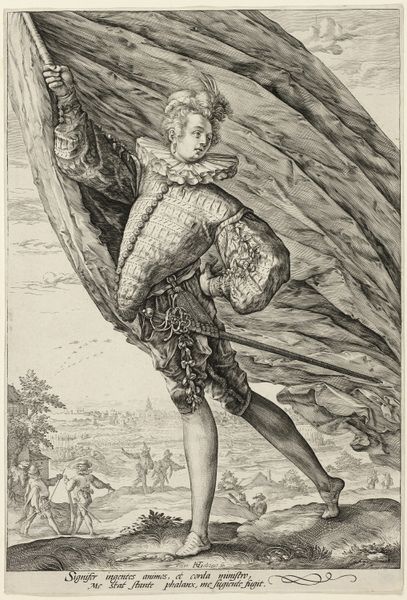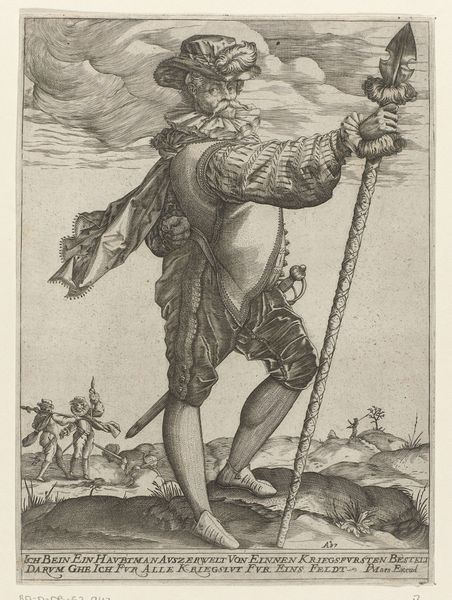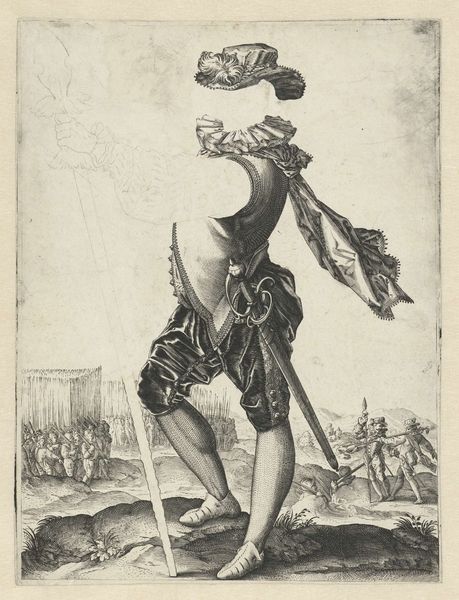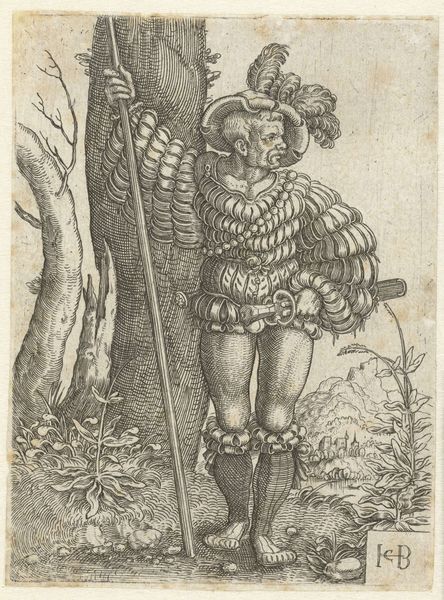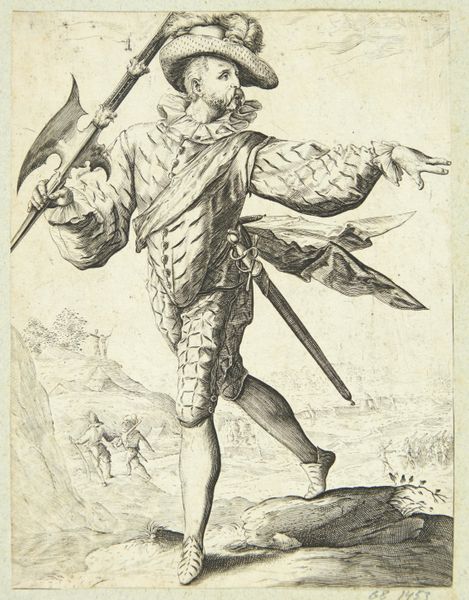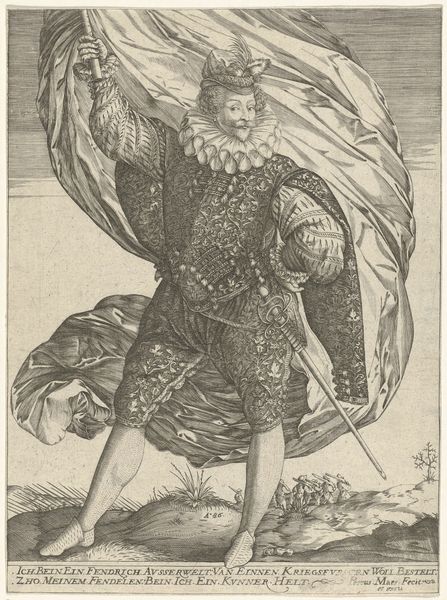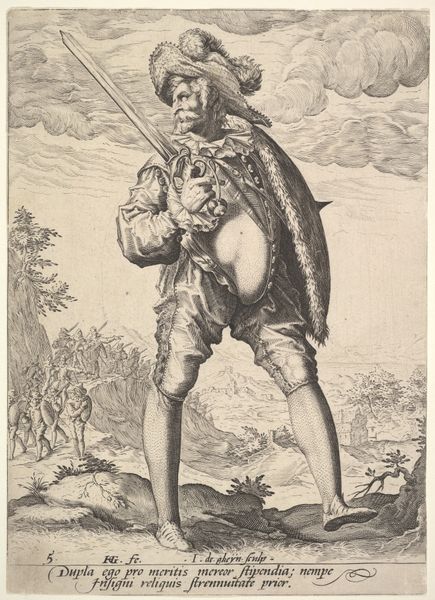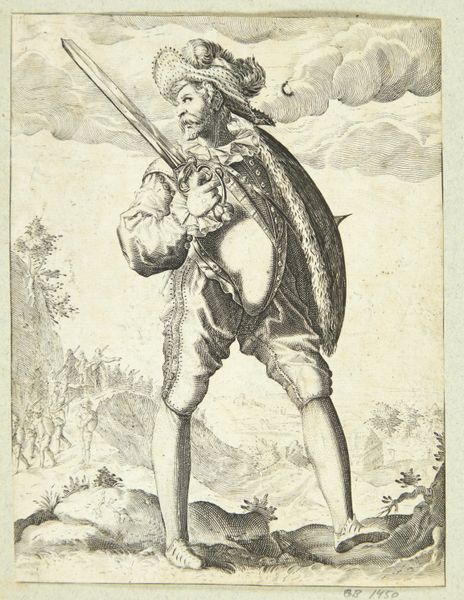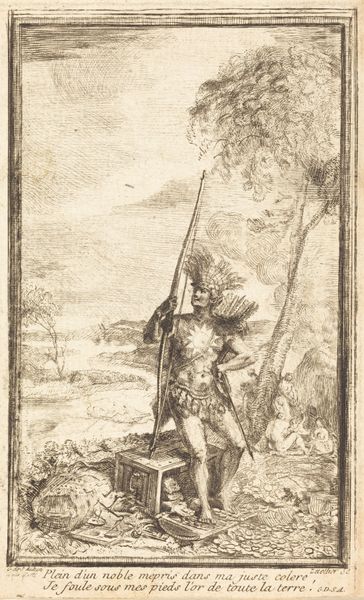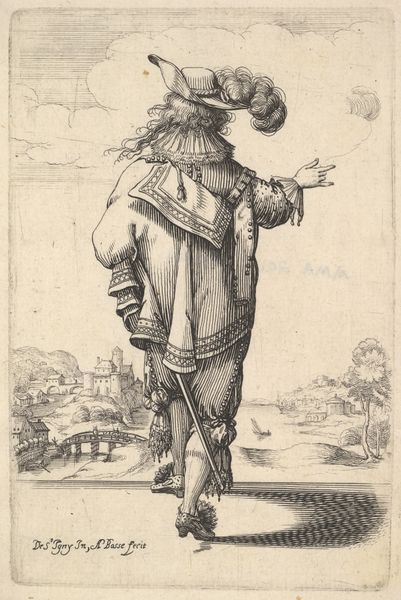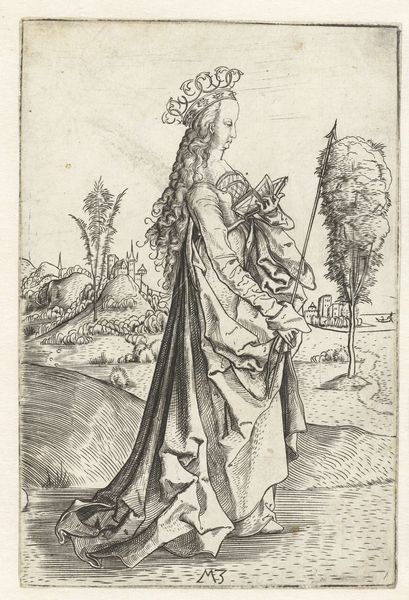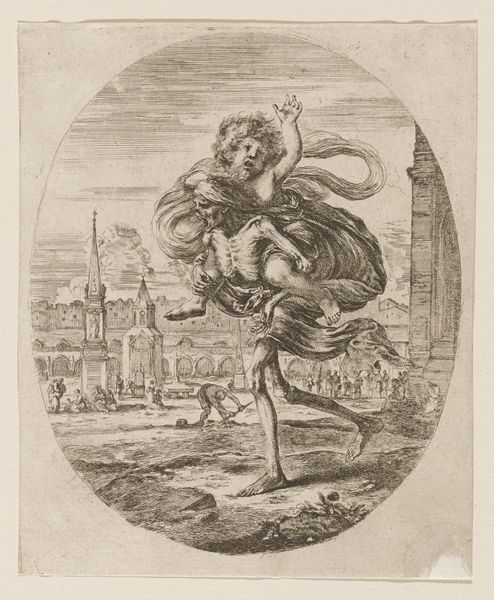
print, engraving
#
portrait
# print
#
old engraving style
#
landscape
#
mannerism
#
figuration
#
line
#
history-painting
#
engraving
Dimensions: height 284 mm, width 193 mm
Copyright: Rijks Museum: Open Domain
Curator: Today we're examining "Vaandeldrager," a 1587 engraving by Heinrich Wirich, housed right here at the Rijksmuseum. Editor: My first impression? Striking use of line. The dynamism! The sheer volume of that flag almost overwhelms the figure. Curator: Indeed. What strikes me is how this figure embodies the complex social dynamics of the era. Here we see what seems to be an aristocrat holding what seems to be a battlefield. This suggests he embodies authority while in turn holding up and facilitating the mechanisms of war for the everyday folk in society. Editor: Agreed. And the way the light catches his sleeve and collar... those textures are rendered beautifully using varied crosshatching. Wirich clearly mastered the burin. Look closer! Curator: It's a Mannerist portrait deeply embedded within a historical context of political and religious upheaval. The Netherlands was in the midst of its revolt against Spanish rule. It prompts reflection on nationalism, gendered performance, and aristocratic duty within the Dutch Republic's foundation. This is not just artistry for arts sake; it speaks to Dutch struggle for autonomy in which class has no choice but to facilitate the very act in the hope for overall freedom. Editor: Certainly, but before all that, consider the formal composition. The billowing flag directs our gaze. That gaze is pulled through the frame to the men standing in the battlefield! I do notice there is a second perspective which, if looked at separately, shows the man stepping outside the frame, if that makes any sense? The composition becomes dynamic because it includes the element of depth but also hints a second perspective within itself! It is clever but subtle. Curator: Absolutely. His assured stance and haughty glance demand respect, fitting well with masculinity in conflict with war-making for freedom and equality. However, this raises questions regarding the roles of power at play at this time. The ruling class had no option to join in but still are able to retain certain hierarchical powers over the everyday. How can a man with such luxury facilitate freedom, really? Editor: In turn this begs the question, are you viewing the artist with suspicion, questioning if he is glorifying or investigating the social tensions that underly an artwork with an obviously rich man as its figure? Is that valid? In contrast I want to focus back to technique! Curator: Both approaches work in tandem and neither negates the other. That's why looking through both lenses gives this art so much depth and insight. Editor: I agree completely. A valuable perspective indeed!
Comments
No comments
Be the first to comment and join the conversation on the ultimate creative platform.
